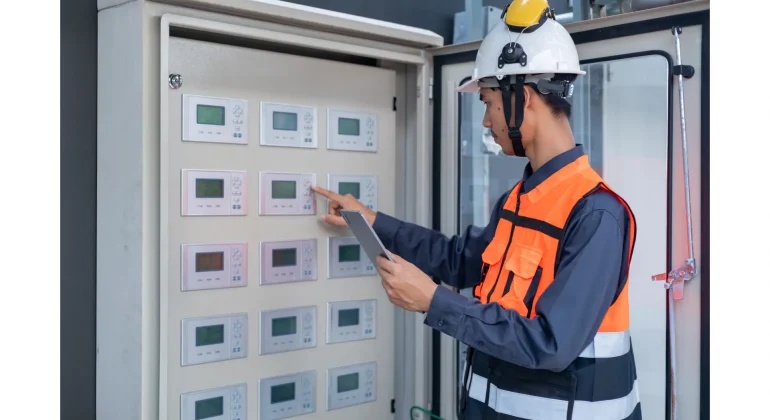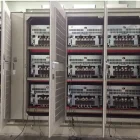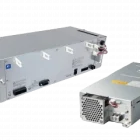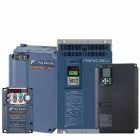Medium Voltage Switchgear (MVSG) systems form the backbone of industrial and utility power networks. At their core, MVSG protection relay acts as vigilant guardians, constantly monitoring electrical parameters to prevent catastrophic failures. These devices ensure seamless operations by detecting faults (like short circuits or overloads) and triggering instant shutdowns when needed.
Fuji Electric supports these systems with complementary components like Medium Voltage Variable Speed Drives (MV VSDs) and transformers, ensuring end-to-end reliability for modern power infrastructure.
What Do MVSG Protection Relays Do?
Protection relays perform critical roles to keep systems safe and efficient:
Overcurrent Protection
Overcurrent relays monitor current levels and respond when thresholds exceed safe limits. For example, inverse-time relays act faster during severe overloads (like a short circuit), while definite-time relays trip after a fixed delay for moderate overloads. This prevents equipment burnout and reduces fire risks.
Voltage Protection
Voltage fluctuations can destabilize entire grids. Overvoltage relays disconnect circuits during surges (e.g., lightning strikes), while undervoltage relays guard against brownouts that strain motors. This dual protection extends equipment lifespan and avoids costly downtime.
Differential Protection
These relays compare incoming and outgoing currents in transformers or generators. They isolate the equipment within milliseconds if a mismatch occurs (indicating an internal fault). This method is highly selective, minimizing unnecessary shutdowns in healthy sections.
Earth Fault Detection
Ground faults often go unnoticed until they escalate. Earth fault relays detect current leaks to the ground, such as damaged insulation in cables, and disconnect the circuit before it endangers personnel or equipment.
Pro tip: Use modern relays’ event recording features to capture fault data. This simplifies troubleshooting and reduces downtime.
Types of MVSG Protection Relays
Electromechanical Relays
These detect faults using moving parts like coils and springs. While affordable and robust, they lack precision for complex grids and require frequent calibration. They are best suited for legacy systems with basic protection needs.
Solid-State Relays
These relays replace mechanical parts with semiconductor circuits, offering faster response times (under 50 milliseconds) and better accuracy. They handle moderate complexity but struggle with advanced communication features.
Digital/Numerical Relays
The gold standard today. These microprocessor-based devices combine multiple protection functions (overcurrent, voltage, etc.) into one unit. They support real-time data logging, remote adjustments via software, and integration with SCADA systems. Fuji Electric’s MV VSDs pair seamlessly with these relays, enabling dynamic motor control while maintaining system-wide safety.
Why Modern Relays Are Game-Changers
Today’s MVSG protection relays go beyond essential fault detection. They deliver:
Smart Communication
IEC 61850 compatibility allows relays to share data with other grid devices (like circuit breakers or sensors) over Ethernet. Operators can monitor systems remotely via smartphones or laptops, slashing onsite inspections by up to 40%.
Self-Healing Features
Built-in diagnostics run continuous health checks. If a relay detects a failing component (e.g., a worn-out capacitor), it alerts technicians for preemptive repairs, avoiding unplanned outages.
Cybersecurity
Advanced encryption and role-based access controls block unauthorized changes to relay settings. This is critical for healthcare or data centers industries, where a cyberattack could disrupt lifesaving equipment.
Adaptive Settings
Relays automatically adjust trip curves based on real-time load conditions. During peak demand, they might tolerate brief overloads to avoid nuisance tripping.
Pro-Tip: Schedule annual firmware updates for your relays. Manufacturers often release patches to address new threats or improve functionality.
Where Are MVSG Protection Relays Used?
Manufacturing Plants
Motors driving conveyor belts or presses are prone to overheating. Protection relays shut down faulty units before they damage production lines, saving thousands in lost productivity. Fuji Electric’s MV VSDs enhance this by optimizing motor speed to match load demands, reducing wear and tear.
Renewable Energy Farms
Solar inverters and wind turbines experience voltage swings due to weather changes. Relays stabilize output by disconnecting faulty panels or turbines, ensuring consistent energy flow to the grid.
Data Centers
A single power hiccup can crash servers. Relays provide multi-layered protection against surges, harmonics, and phase imbalances, guaranteeing 99.999% uptime for critical IT infrastructure.
Best Practices for Relay Management
Conduct Coordination Studies
Misconfigured relays can trip non-faulty sections. For example, a downstream relay reacting slower than an upstream one might cause a cascading outage. Coordination studies map relay response times to ensure only the faulty zone disconnects.
Test Regularly
Use portable test kits to simulate faults (e.g., injecting a 500A current to check overcurrent response). Annual testing catches calibration drift or software glitches early.
Document Everything
Maintain a logbook with relay settings, firmware versions, and test dates. This speeds up audits and helps new technicians troubleshoot faster.
Fuji Electric’s Role in MVSG Systems
While Fuji Electric specializes in components like MV VSDs and transformers rather than protection relays, their products enhance the reliability of MVSG networks. For example:
- MV VSDs adjust motor speed to match operational needs, cutting energy use by up to 30% and reducing mechanical stress. They also communicate with protection relays to preemptively slow motors during voltage dips.
- MOLTRA Transformers use cast resin insulation to withstand high temperatures and humidity, minimizing fire risks in harsh environments like mines or chemical plants.
Robust components like these ensure protection relays operate in stable, well-managed environments.
FAQs About MVSG Protection Relays
What is the function of a protection relay?
A protection relay is crucial to detect electrical abnormalities such as overcurrents, short circuits, or voltage fluctuations in power systems. Once a fault is identified, the relay sends a signal to disconnect the faulty equipment from the grid.
This prevents damage to machinery and ensures the safety of personnel and the overall system. This swift action helps maintain system stability and reduces downtime.
What is the most advanced protection relay in ABB?
ABB’s Relion series is among the most advanced protection relays available. It offers features like adaptive protection, which adjusts settings based on real-time conditions, and cloud-based monitoring, which allows operators to access relay data remotely and perform diagnostics. Additionally, Relion relays support IEC 61850 communication standards, enabling seamless integration with other grid devices. This advanced technology enhances system reliability and efficiency.
What does a master trip relay do?
A master trip relay is a central control point in complex power systems. It receives trip signals from multiple protection relays and amplifies them to ensure that all relevant circuit breakers open simultaneously during a critical fault.
This coordinated action helps isolate faults quickly and safely, reducing the risk of cascading failures and minimizing downtime. Master trip relays are particularly useful in high-reliability applications like data centers or hospitals.
What is the primary function of an MCR safety relay?
An MCR (Machine Condition Relay) safety relay is designed to monitor safety functions in machinery and trigger emergency shutdowns if hazardous conditions arise.
For example, if a machine’s safety interlock is compromised or a critical parameter exceeds safe limits, the MCR relay initiates a shutdown to protect workers and equipment. Having two reliable ways to stop the machinery in an emergency will improve compliance with safety rules, which can help avoid accidents.
Final Thoughts
MVSG protection relays are vital in power systems. They blend cutting-edge tech with lifesaving functionality. Fuji Electric’s robust components create a safety net for industries where downtime isn’t an option. Stay proactive with maintenance, leverage innovative features, and always prioritize cybersecurity—your power system will thank you.
About Fuji Electric Sales Philippines, Inc.
With roots in Japan’s Fuji Electric Co., Ltd., Fuji Electric Sales Philippines, Inc. helps power progress across the country. The company offers sales, promotion, and support for products that boost energy efficiency and enhance electrical infrastructure.
Boost your capabilities with MVSG protection relay. Contact Fuji Electric here:
Rickson Manalo
Assistant Sales Manager
0917-115 6102








